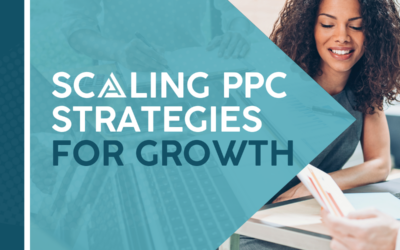Marketing for a multi-location business comes with a fair share of challenges, but proving ROI might just be at the top of the list. How else can you clearly show the value of your efforts, especially when the data is coming in from every direction, and every individual location has its own unique data? For your stakeholders, like investors or portfolio managers, those numbers need to correlate to real-world growth, and they need to demonstrate efficiency.
This article looks at the practical side of data-driven marketing. We’ll cover what metrics matter, how you can track them, and then how to turn all that data into something meaningful you can present. Are you justifying budgets, finding areas to scale, or improving valuation? We’ll break it all down and look at how better tracking and reporting can help you prove ROI and use it as a tool for making smarter decisions across your portfolio.
Why Proving ROI Matters for Portfolio Growth
For decision-makers, ROI is the foundation of every major business decision that is made. It’s how you justify marketing budgets adjustments, build investor confidence, and decide where to focus on or pivot away from. In multi-location businesses, proving ROI is the telling of the story of how your marketing strategies had an effect on growth and long-term value.
Think of it this way: ROI is the proof that your efforts – from local to national – are moving the needle. And this matters even more in GP-led secondaries, where you have to show past success, but also prove that a portfolio company can efficiently scale, and that it can keep growing under new ownership.
Here’s why nailing ROI really is non-negotiable for portfolio growth:
- Attracting Investors: Investors are drawn to businesses with clear, data-proven success. When you can show exactly how your marketing makes your business profitable, you aren’t just asking for investment capital, you’re offering a no-brainer of an opportunity.
- Maximizing Valuation: ROI metrics highlight focus on the efficiency and scalability of your business, which are two extremely important factors when it comes to increasing the value of your enterprises.
- Optimizing Resources: Knowing which locations, campaigns, and strategies are delivering the most impact shows that you’re actively using your time, talent, and budget where they have the most impact.
- Driving Portfolio Success: At the end of the day, proving ROI lets you show how every dollar spent has contributed to building a competitive advantage and improving stakeholder confidence – especially in PE-backed HoldCo structures, where OpCo and PropCo financials have to be carefully tracked to show operational efficiency and asset value.
The Key Metrics to Track ROI
Choosing the right metrics to track – and setting comprehensive tracking up at the onset to measure your chosen metrics – is the first step. Without the right metrics, you’ll be drowning in data. For a multi-location business in particular, you want metrics that connect the dots between performance at the local level and the bigger portfolio picture.
Here are some of the most important metrics track:
- Customer Acquisition Cost (CAC): This all-important metric tells you, simply, how much it costs to bring in a new customer. Try to segment this by location, or by specific marketing channel, to get a more closeup picture of your CAC. Deeper analysis can help you discover where acquisition strategies are working well – and where they might need more attention.
- Customer Lifetime Value (CLV): Customer lifetime value is all about the long game. How much revenue is a customer worth over their entire relationship with your business? Try segmenting this by location too, and see where there might be shortcomings. And always compare this to your CAC, for a clearer picture of profitability!
- Return on Ad Spend (ROAS): For every dollar you’ve spent on ads, how much are you earning back? For paid campaigns like Google Ads and Meta, this one is especially important.
- Conversion Rates: Are your campaigns actually working? Are you getting people to act? From turning a website visitor into a booking, or turning a social media ad click into an in-store conversion, tracking conversion rates helps you figure out what specific touchpoints are working.
- Engagement Metrics: Reviews, likes, comments, shares, and even email open rates can show you exactly how customers are interacting with your brand, and how effective each of your campaigns are.
- Revenue Growth: This is the bottom-line metric, the ultimate measure. Look at year-over-year revenue changes for each of your locations, and for the portfolio as a whole. Examine this through several lenses, including a source/channel breakdown, to understand which types of marketing are driving the most revenue growth.
If you get ironclad tracking in place, and focusing on the above metrics, you’ll be well on your way to turning raw data into reporting that proves your marketing strategies are working. And not just in one location, but across the entire portfolio!
Strategies for Proving ROI in Multi-Location Businesses
Now you’re tracking everything, but actually proving ROI is a lot more than just crunching numbers. Now, you have to put systems in place that connect the marketing efforts with real business results – and all in a way that’s easy to understand. Do this right and it will give stakeholders real confidence in your strategies. On top of that, it helps your decision-makers see exactly where, and how, to grow.
1. Centralize Your Data Collection
Disorganized data is a recipe for disaster, and will result in missed opportunities. To prove ROI, first you need a centralized tracking system that monitors performance across every channel and location.
Steps to CentralizeTracking and Data:
- Adopt a Unified CRM Platform: Tools like Salesforce or HubSpot can pull customer data from multiple locations into one central place, giving you an overhead view of performance.
- Integrate Analytics Tools: Platforms like Google Analytics 4 (GA4) let you track metrics on websites, paid ads, and social campaigns, all in a single dashboard.
- Sync POS Systems: Brick-and-mortar locations need to integrate point-of-sale (POS) data with your marketing platforms, or tracking in-store sales and campaigns accurately will be nearly impossible.
Example: A national healthcare network integrates its appointment scheduling system, website analytics, and paid advertising data. Now they can see how a Facebook ad campaign leads to new patient bookings, and for specific clinics, no less.
2. Segment Performance by Location
Every location has its own audience, and varying levels of competition. If you segment your performance data by location, you can understand what’s working, and where.
How to Segment Your Metrics:
- Regional Trends: Break down data by larger regions to identify patterns, like which markets respond better to certain campaigns.
- Local Trends: As with regional trends, break your metrics down by location, locations page, or by geographic area, so you have a close-up view of performance.
- Campaign-Specific ROI: Track the performance of each of your campaign types, from social media ads to email list marketing. Adjust based on what’s getting the best results.
- Customer Demographics: Compare ROI for different audience segments, like first-time customers versus long-time loyalists, or an elderly demographic versus a younger demographic..
Example: A behavioral health organization finds that clinics in urban areas have higher CAC but also a shorter path to conversion. This helped them justify additional ad spend in these types of markets.
3. Tie Marketing to Financial Goals
ROI isn’t just connected to marketing, it’s a key financial metric for the business as a whole. To prove the value of your efforts and the return on the investment, connect your marketing results directly to profitability, growth, and long-term scalability measures.
How to Align Marketing with Financial Objectives:
- Focus on High-Margin Services: Prioritize the campaigns that promote the most profitable services or products.
- Demonstrate Portfolio Impact: Show how each location contributes to the overall revenue picture, and improves valuation.
- Show Scalability: Highlight efforts that reduce acquisition costs (CAC) while increasing lifetime value (CLV) – these are the efforts that show growth potential.
Example: A dental network rolls out a national teeth-whitening program that drives a 20% increase in high-profit service bookings. By showcasing this boost in profitability, they’re able to get more funding for similar campaigns.
4. Turn Data Into Stories for Stakeholders
Now, you have to tell the story, because data without context is just noise. To prove ROI, your reports need to connect the dots between your marketing efforts and real financial outcomes.
Tips for Better Reporting:
- Use Dashboards: Tools like Google Data Studio make it easy to visualize performance in real time, and sift through large amounts of data quickly.
- Focus on Key Metrics: Highlight the numbers that matter right from the start, like ROAS, CAC, and revenue growth, and avoid overwhelming stakeholders with unnecessary details and metrics!
- Bring in Visuals: Charts, heatmaps, and trend lines make it much easier for stakeholders to see what’s working without bogging them down with a ton of data.
Example: A fitness franchise creates a dashboard comparing pre- and post-campaign metrics across every location. The report shows a 25% increase in membership sign-ups – directly tying the success back to their latest social media push.
Proving ROI means showing what works, and finding more ways to grow. When you’ve organized your data, focused yourself on the financial goals of the business, and started sharing clear insights – then you’re not just tracking results anymore, you’re building a strong foundation for success and growth.
In the next article, we’ll look at how marketing can directly impact financial valuation. From boosting brand equity to improving operational efficiency at the location level, we’ll explore how a really strong marketing strategy can increase profitability and make your business more attractive to investors. Read on to learn about how marketing can support long-term financial success, and open doors to high-value exits or expansion opportunities.











